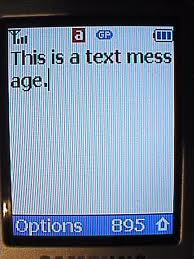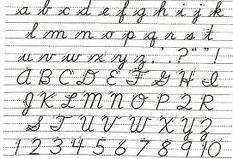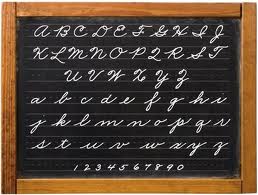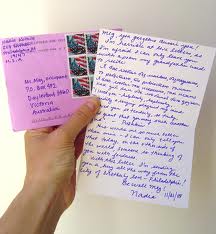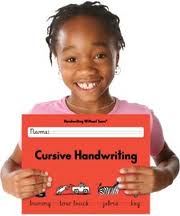Nearly every parent I know has wrestled with deciding how important it is to have their children take Advanced Placement (AP) courses. Parents want their children to have all the opportunities they can get so that they can succeed and be happy in life. (If only happiness could be achieved that easily!) Meanwhile, kids feel the pressure and report feeling exhausted, unhappy and anxious.
People often ask me, as a person who has spent nearly twenty years in the classroom, what I think about AP classes. Should their child take this AP or that AP. And they are often surprised when I respond with a question: “Does your child love French? Because if he doesn’t love it, why would you want him to take the AP which is going to require so much of his time and energy?”
What people (and by people, I mean parents) do not seem to understand is that the demand of an AP class is designed to be similar to a 100-level college class. The difference is that, in high school, that class will likely meet every day – while in college, there is usually an “off-day” where students have time to read and generally better manage coursework.
In RACE TO NOWHERE, filmmakers Vicki Abeles and Jessica Congdon speak to educators, parents, tweens, and teens about the pressures they face academically and emotionally, and the physical toll these expectations exact. What results is a picture of a fractured educational system that pushes kids to become successful — but at a cost.
During the Post World War II Advanced Placement pilot program, AP courses were designed to draw the top students into a small class of other students who LOVED the material. In 1952, AP classes were designed to be small so teachers could move at an accelerated pace because of the students’ voracious love of the subject matter. The idea was excellent.
Of course, what has happened over time, is that parents have demanded that their children be allowed entry into AP classes because, these days, there is a warped race to create the best college application. (Believe me, parents want those AP’s on their college applications.) So AP class sizes have ballooned, and there is less one-on-one with teachers. And kids who had no business being in an AP in the first place struggle. Because AP classes are hard. Really hard. When the idea was created, I don’t think anyone from the Ford Foundation would have recommended that any one student take five AP courses.
I always tell parents that AP courses are not the be all/end all. When I say this, they look at me like I have five heads. Then they ignore me completely. (I’m telling you, parents don’t like to hear this.)
I truly believe that the point of education is for children to love to learn. When students are getting sick, when they arrive at college unprepared and unmotivated, there is a problem. Students who feel too much pressure to perform, burn out. Feeling the pressure to achieve, students self-medicate, turn to drugs and alcohol as an escape, and sometimes cheat to complete the ever mounting pile of assignments which need to finished – now! From my vantage point, I see kids who are over-scheduled and overtired.
School should be the place where our teens learn about balance. Schools that allow students to skip lunch periods so they can take five Advanced Placement courses have bought into the hype (or caved into parental pressure). And that is sad. Lunch should not be optional. Humans need to stop and eat healthy food (not a bag of chips) to provide their bodies with energy. I don’t care how many times a parent calls and says, “I want my son to take 5 APs.” Administrators need to grow a set and say, “I’m sorry, but we just don’t think that is beneficial to your child.” Students need help learning how to make healthy choices. Sometimes that means they need the school to shield them from demanding parents. And anyway, kids don’t have to be enrolled in a course to take AP tests: a really self-motivated kid who loves to learn should be able to access all the material he needs to prepare him/herself for any AP test.
For the love of Pete, I’m a Tiger Momma. I believe our children need to pick the things they do and do them well. But we need to help guide them to understand they cannot do everything. Our kids need to study hard – absolutely – but they also need to eat. They need to be able to go to the bathroom without worrying they are missing crucial information. And they need to be allowed to tune school out for a while so they can exercise and nurture friendships. They should not be running from this practice to that recital just be sitting on their asses in front of their computers every night.
When I was in high school, I had the opportunity to take regular English, AP English, or Syracuse University Project Advance (SUPA English). At the time, SUPA was a college curriculum class taught by our own high school instructors who had been trained to teach the course. I worked my butt off in that class, and I did not always excel. I remember getting one paper back with a big fat “D” on it. (Maybe it was a “C,” but in my mind, I remember it as a “D.”) I also remember taking that paper to the library and weeping next to a huge potted plant. I had worked so hard on that paper. And English was the subject in which I was supposed to excel. I did not understand how I could have failed. My ego was battered, but my love for the subject matter made me want to figure things out. I busted my hump in that class. It was truly an amazing experience, and I believe it was the course that best prepared me for college.
When I think back on it, I cannot imagine how grueling it must put in that kind of work into every subject, every day. To me, taking all those APs seems utterly unnecessary. No one has ever asked me: “How many AP courses did you take in high school?” (Well, one pretentious fuck did, but it was after he had polished off an entire bottle of red wine himself.) In fact, many colleges don’t even accept AP credit anymore. It’s true.
So, my recommendation is this: If you’ve got a kid who is interested in some accelerated academic experience, have him/her enroll in a summer course at a real college. That looks good on college applications, too. And the credit might actually transfer somewhere, and it might help transition him or her to the realities of actual college life. Help your child live a balanced life. Have your kid go to summer camp, get a job, plant a garden, try something he/she has never done before. Not for the college application, just because.
In the United States, success has long meant making a lot of money. And the way to do this has traditionally meant attending a great college. But we need to redefine success for children. We have gotten caught up in this “race to nowhere,” as described by Abeles and Congdon. We need to teach our kids to do what they love – not pressure them into taking five AP classes because it will make them look good on paper.
In 2010, over 1.8 million students took over 3.2 million AP tests at about $87 bucks a pop. I’m no mathematician, but even I can tell that some people are taking more than one test. And I’d like to know five years down the line, where those kids are, and if they feel all that pain was worth it.
Check out this clip from the film below. Tell me you don’t want to see it!

















